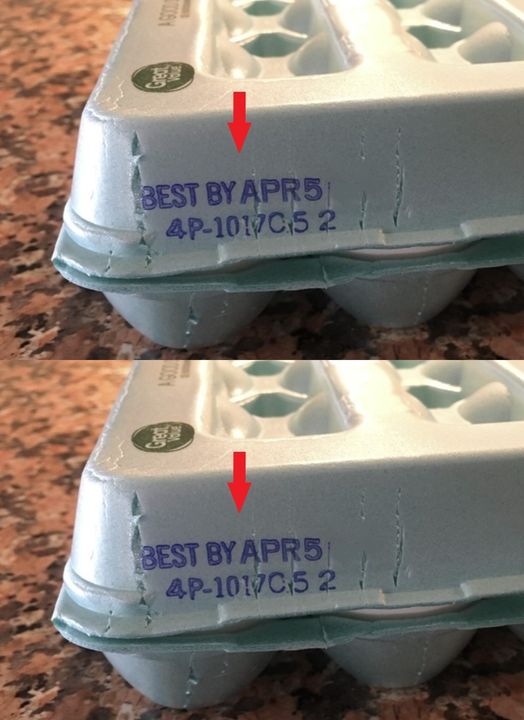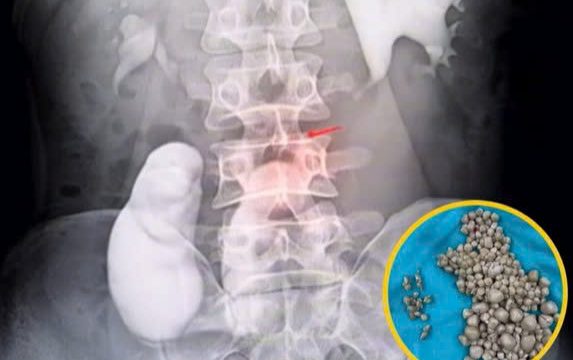A few years ago, I made a quiche for a dinner party and accidentally ended up making everyone sick—not seriously, but just enough to leave us all feeling queasy and uncomfortable. The culprit? Eggs. What baffled me the most was that the eggs didn’t seem bad at all. They weren’t expired, there was no strange smell, and nothing looked off.

I was completely stumped. It wasn’t until later that I learned there was a small but important number on the side of the carton that I had ignored my entire life. This mysterious number, printed clearly but often overlooked, held the key to understanding how fresh those eggs really were. It’s called the Julian date—a three-digit number like 045 or 312 that represents the exact day of the year the eggs were packed. For example, 001 means January 1st, and 123 is May 2nd. This number can tell you far more about the freshness of your eggs than the standard “sell by” or “best by” dates ever could. Now, whenever I shop for eggs, I always scan for the most recent Julian dates. It’s become a bit of an obsession. I’ve definitely looked like a maniac in the refrigerated aisle, carefully comparing cartons while other shoppers glance over in confusion. I don’t care—I’ve learned my lesson.
Alongside the Julian date, there’s usually a plant code starting with “P,” like “P1942.” This code tells you where the eggs were processed. It may seem irrelevant until there’s a salmonella recall and you have no idea whether your eggs are part of it. I’ve been there—standing in front of my fridge, carton in hand, frantically checking government recall websites. Thankfully, my eggs weren’t part of that outbreak, but those few minutes of uncertainty were enough to make me a lifelong label reader. Another common misconception is that if an egg sinks in water, it’s good, and if it floats, it’s bad. While that method can sometimes work, it’s not foolproof. I now rely entirely on the Julian date, and I even write it on the top of the carton with a reminder to toss them after 30 days. Sometimes I’ll add a sad face on the expiration day for fun—it’s silly but effective.
Also, pro tip: keep your eggs in the coldest part of the fridge, not the door. They stay fresher that way. Let’s talk labels for a moment. “Cage-Free,” “Free-Range,” “Organic,” and “Pastured” all sound great, but they’re not all created equal. “Cage-free” often just means the chickens aren’t in cages, but they’re still confined to crowded barns. “Free-range” might imply outdoor access, but in reality, it can mean the chickens briefly see sunlight through a small opening. If you’re looking for eggs from chickens that actually roam and forage outdoors, go for “pastured.” The yolks from these eggs are often a rich orange color and taste noticeably better—at least they do to me.
And then there are USDA grades: AA, A, and B. Grade AA eggs have thick whites and high-standing yolks—ideal for frying or poaching. Grade A eggs are still great but just a notch below. Grade B eggs? You’ll rarely see them in a typical grocery store; they’re usually used for mass baking or processed foods. I use Grade AA when I want the eggs to shine and Grade A for baking where texture isn’t as critical. One Sunday, I made scrambled eggs and noticed something was off. They were watery, bland, and just not right. I checked the Julian date—36 days old. Technically still safe, but clearly past their prime. Two weeks later, I bought a fresher carton and used the same method. The eggs were fluffy, flavorful, and smelled amazing. That’s when I fully embraced my status as an egg snob. Those tiny numbers on the carton aren’t just decoration—they’re your best tool for knowing how fresh your eggs are, where they came from, and whether they’ll elevate your breakfast or ruin your brunch. So the next time you’re in the grocery store inspecting eggs like you’re evaluating fine jewelry, just know you’re doing it right. Let people stare. They don’t know what you know. And hey, now that you’re in the know too—no more accidental food poisoning. I love that for you.





